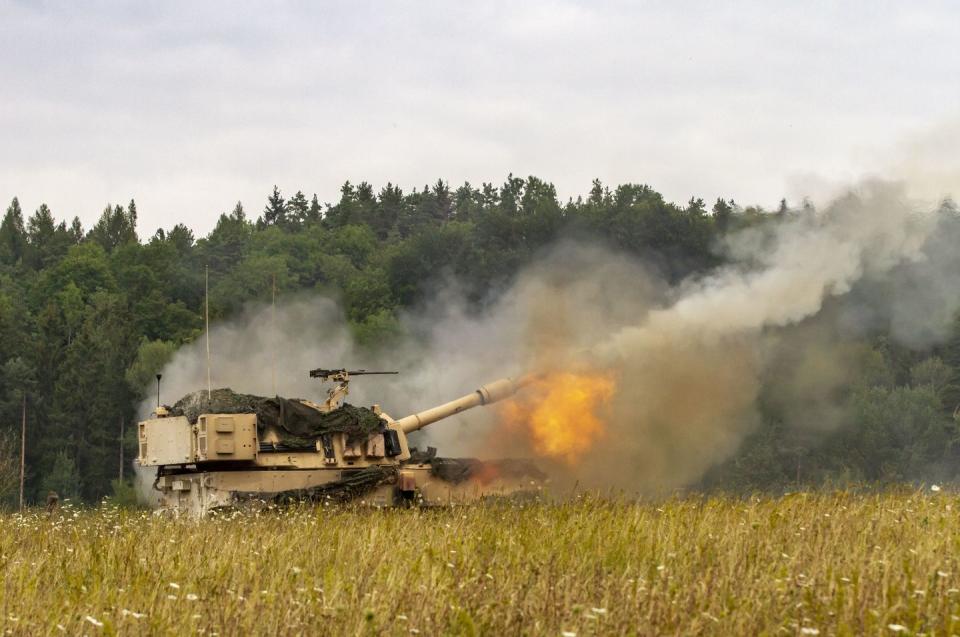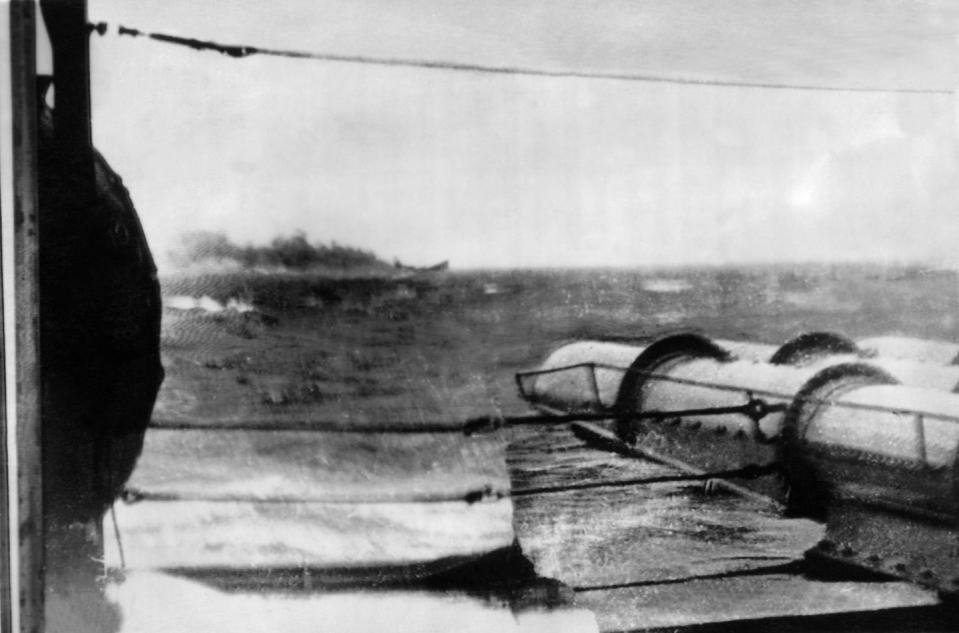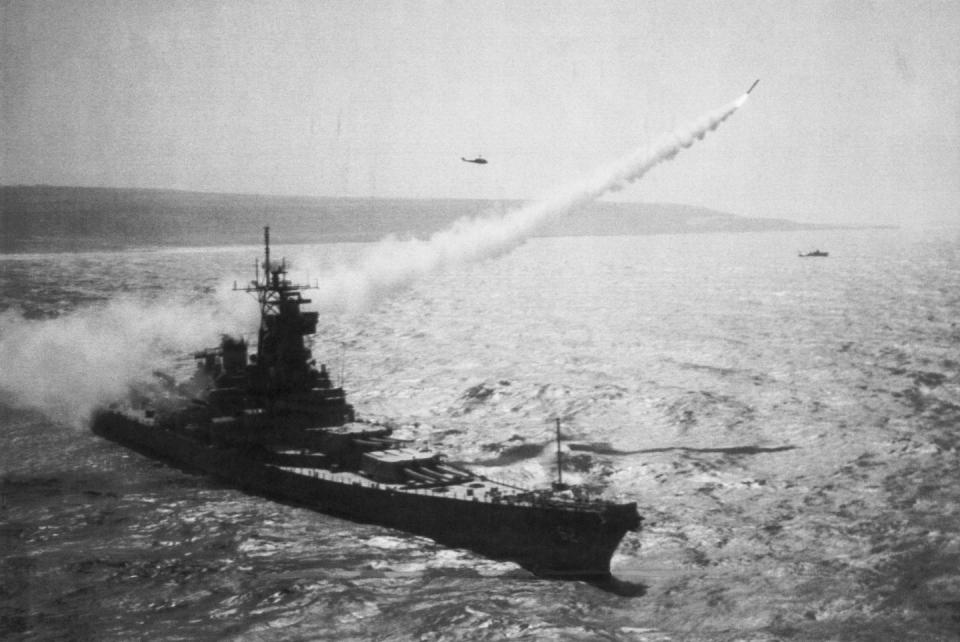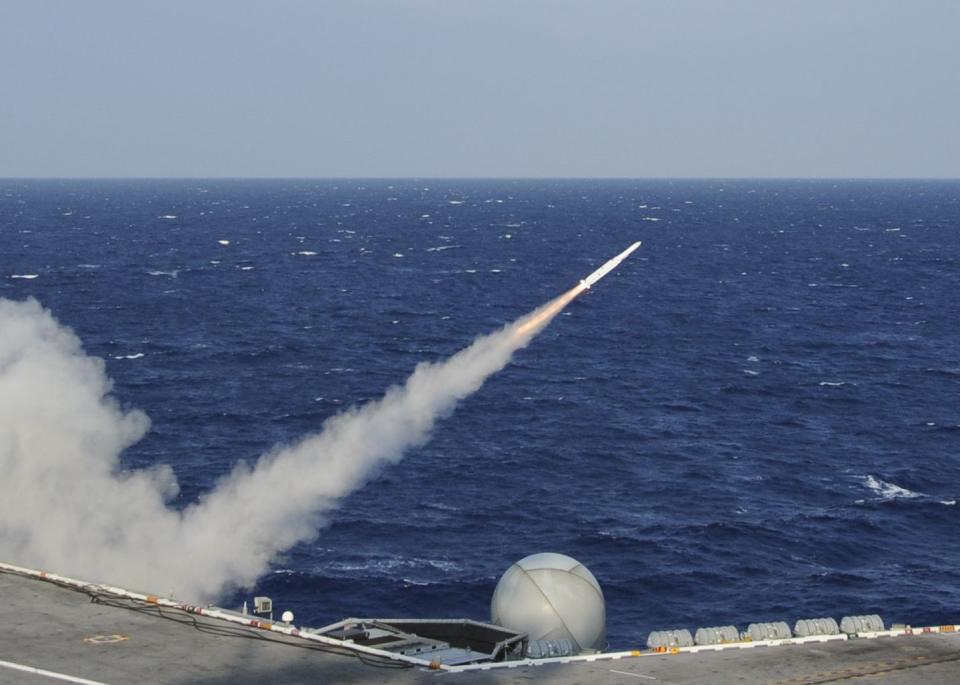The Army's 1,000-Mile Cannon Is Coming. Could It Bring Back Battleships?
The U.S. Army is working on a new cannon it claims will have a range of more than 1,000 miles.
The ground service intends to move it around with heavy trucks.
The gun’s range, however, could make a warship—some might call it a battleship—a much better platform.
The U.S. Army is working on a new, long-range cannon it claims can reach out and strike targets at up to 1,150 miles. If the technology works, the Strategic Long Range Cannon (SLRC) promises the ability to fire 50 times farther than existing guns. But the new gun also has the potential to bring back a dormant class of big-gun warships once thought gone for good: the mighty battleship.
➡ You love badass military tech. So do we. Let's nerd out together.
Earlier this year, Popular Mechanics published leaked photos showing the capabilities of the SLRC. With an effective range of 1,000 nautical miles—at 1,150 miles, that's about 1,130 miles farther than existing guns—the SLRC could be a truly revolutionary breakthrough in artillery warfare.
U.S. Army's Strategic Long-Range Cannon (SLRC) can shoot out to 1,000 miles or more @Aviation_Intel @Defence_blog pic.twitter.com/TYatBCSa5N
— 笑脸男人 (@lfx160219) February 21, 2020
The Army hasn’t explained how it will reach such a mind-bending range, but it seems confident the gun will work as planned. A committee formed by the National Academies of Sciences, Engineering, and Medicine is currently taking a look at the technology to determine its feasibility, and the service plans to test a prototype in 2023. The Army envisions the SLRC as a towed gun pulled by a heavy truck, using its range to blast a hole in enemy air and sea defenses big enough for U.S. forces to squeeze through.
SLRC faces limitations as a wholly land-based system. The Army would need to gather permission from countries such as the Philippines, Germany, Norway, or Japan to locate the weapon on their soil, and as a truck-based weapon, it would be restricted to paved roads. Just getting the gun to the battlefield would require nearby airfields, secure airspace, and enough Air Force transports to lug the big guns around.

The solution, then, is to base at least some of the cannons on ships.
A single ship could carry the entire four-gun battery the Army envisioned deploying SLRC abroad, plus shells to keep the guns firing. A warship could relocate the guns at sea without asking anyone for permission, and would be more difficult for enemy forces to target. It would also have greater flexibility, deploying into areas where local allies might not be willing to host big guns.
All of this might sound very familiar. In 1940, most of the major world powers maintained large fleets of battleships—those large, heavily armored warships carrying between eight and 12 guns, all between 12 and 18 inches in diameter. Battleships were envisioned as the decisive arm of naval warfare, engaging the enemy fleet in a series of battles that would decide the war at sea.

By July 1942, however, real-life events had poured cold water on the battleship. The destruction of the German battleship Bismarck, the sinking of the Royal Navy battlewagons Prince of Wales and Repulse, and the Battle of Midway all proved the superiority of aircraft over the sea-based guns of the battleship. The last battleships left shipyards in 1944, and despite occasional returns to service, the class is considered obsolete.
Battleships lost to aircraft carriers because their firepower, however massive, was constrained by a relatively short range. The last battleships built for the U.S. Navy, the Iowa class, had a powerful battery of nine 16-inch Mark 7 guns, but could only hit targets a maximum distance of 23.6 miles. The Iowa was also, with the exception of a pair of seaplanes, comparatively blind and incapable of locating enemy ships at ranges greater than the horizon.
An aircraft carrier could fan out its airplanes hundreds of miles in all directions searching for an enemy battle fleet. Once identified, it could then send its planes out to attack from the air in a devastating strike.

The U.S. Navy could base the SLRC on a new class of battleships. (Let’s call it the Montana class, after the class of battleships that were planned, but never built.) Would a SLRC-armed warship look like the big, beefy battleships of old? Probably not.
The Montana class might well be stealthy, like the Zumwalt-class ships, retracting the gun barrels within the ship's deck when not in use. A heavy belt of armor probably wouldn't be necessary, as the Montana wouldn't engage in the sort of titanic ship-vs-ship battleship duels of the early 20th century. Alternatively, the Navy could choose to put the guns on cheaper commercial hulls, like the Mercy-class hospital ships.
A Montana-class battleship could give the U.S. Navy the ability to strike targets at unprecedented ranges. From the North Sea, a Montana could bombard targets in western Russia and even Moscow itself. A single Montana in the Indian Ocean could target most of Pakistan, Afghanistan, Iran, Yemen, and Somalia. In the Pacific, a Montana sailing relative safely behind Japan could bombard all of North Korea and as far west as Beijing and Shanghai.

A Montana-class ship might carry four SLRC cannons in two turrets of two cannons each. It could carry Evolved Sea Sparrow Missiles and Phalanx close-in weapon systems for self defense, but would otherwise rely on cruiser and destroyer escorts—and sheer distance—for protection.
Although the ship would want to reserve as much internal volume as possible for cannon ammunition, the Navy could find the room for a missile silos, each carrying a Tomahawk land attack cruise missile. That might allow the Montana-class to conduct missile and gun attacks at the same time, complicating the enemy’s defense plan.
The irony of a new type of battleship is that the very weapon that made it obsolete in the face of aircraft—big guns—could put it back at the top of the heap again.
In 1943, a battleship could only strike targets at a maximum range of 20 nautical miles, while the carrier could strike at up to 872 miles. Now, in 2020, a battleship could reach up to 1,000 nautical miles while the F-35C, the seagoing version of the Joint Strike Fighter, has a combat radius between 630 and 740 miles.
A Montana-class ship could also strike targets at greater ranges without endangering a pilot and, depending on the cost of ammunition, might do it more cheaply than a fighter that costs $45,000 an hour to fly. That said, carriers are such versatile platforms that a new type of battleship would merely complement them, not displace them.
Could the battleship steam back, through the mists of time, to once again become a major surface warship? If the SLRC actually works, it’s a possibility. If the first test shot in 2023 is successful, it will be the Pentagon’s advantage to examine alternate deployment scenarios. And if not, well, no one counted on the battleship returning to service anyway.
You Might Also Like

